“‘ . . . in this country, when something is out of order, then the quickest way to get it fixed is the best way.'”
—from One Flew Over the Cuckoo’s Nest by Ken Kesey
words to inspire before you expire
“‘ . . . in this country, when something is out of order, then the quickest way to get it fixed is the best way.'”
—from One Flew Over the Cuckoo’s Nest by Ken Kesey
“‘Americans make the best husbands,’ the American lady said to my wife. I was getting down the bags. ‘American men are the only men in the world to marry.'”
—from “A Canary For One” by Ernest Hemingway
Good morning class.
If The Bell Jar is any indication as to what Sylvia Plath’s life was like, she was surrounded by tragedy. She wasn’t a typical tortured artist, if there is such a thing—I imagine that her art would have thrived fantastically without her mental illness. As it is, I believe her art thrived in spite of her troubled mind, not because of it. Even in my own limited experience with mental illness, I’ve never seen psychological turmoil as a gateway to impactful creativity . . . I only see it as a hindrance.
That might be reason enough to read The Bell Jar, which subverts misconceptions about mental illness, women, and the American dream without hesitation. Plath holds nothing back, and it’s painful, powerful reading.
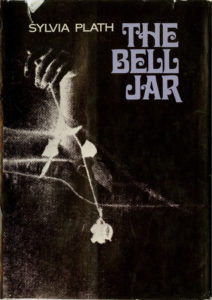 The story follows Esther Greenwood, a young woman with a bright future who begins to suffer from depression. At first it’s mild—inconvenient distresses that affect her life here and there—but it develops into suicidal thoughts and actions. One almost-forgettable moment stands out to me: she sleeps in one morning, innocently enough, because she feels like there’s nothing to look forward to if she gets up. The light from the window shines in, but she buries herself in her sheets and under her pillow, back into the darkness. It’s subtle, but it’s a clear sign of her illness affecting her every moment.
The story follows Esther Greenwood, a young woman with a bright future who begins to suffer from depression. At first it’s mild—inconvenient distresses that affect her life here and there—but it develops into suicidal thoughts and actions. One almost-forgettable moment stands out to me: she sleeps in one morning, innocently enough, because she feels like there’s nothing to look forward to if she gets up. The light from the window shines in, but she buries herself in her sheets and under her pillow, back into the darkness. It’s subtle, but it’s a clear sign of her illness affecting her every moment.
After a suicide attempt, Esther is committed to an institution, where she goes through medication and shock therapy. She describes her condition as being trapped under a bell jar, breathing in the same toxic air every moment of every day, no matter where she is or who she’s with—the bell jar is always there.
The extra layer of her struggle is being a woman in 1950’s America. She goes on dates with men of differing levels of ingrained misogyny. She sees other women around her as reflections of her two extreme options—the perfect do-good lady and the rule-breaker—and only she seems to belong in between. Several people, including her mother, pressure her towards finding a man, settling down, beginning a family . . . and everyone cautions her against sex before marriage, despite the obvious double standard. Esther’s life seems to be one hardship after another, and the 1950’s do her no favors.
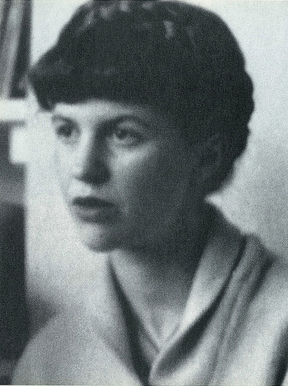
Author Sylvia Plath
The Bell Jar is not light reading. Several times, over multiple chapters, Esther does more than consider suicide in a passing thought. She analyzes the best way to kill herself, and goes through the motions before being interrupted or facing an insurmountable obstacle. At one point, she remarks that her body has “little tricks” that keep her from killing herself, like an internal instinct she has no say over—but if she had the whole say, she’d be dead already. When she actually conquers this instinct, the suicide attempt portrayed on the page is simple and disturbing.
But as graphic as The Bell Jar can be, that’s not the reason to read it—the reason to read it is because of what Plath gets right in the details. The subtleties of depression are portrayed with honesty, and with no grand presentation. To read The Bell Jar is to get a nuanced depiction of a troubled mind.
Next up, I’m reading The Diary of Anne Frank—similarly not-light reading. But I’m excited because I know that it’s no portrayal; her diary, her actual thoughts, convey her life as a young woman in a strange kind of captivity. Her diary did as much for understanding young women as The Bell Jar did, if not more. It’s also not a graphic portrayal of a tragedy; it’s the ups and downs of her life, come as they may, and it’s even more honest than The Bell Jar could hope to be.
But more on that next time.
Prof. Jeffrey
Happy Black History Month!
I’ve recalibrated my view of Black History Month in recent years. Growing up, my privilege helped me see it as the month to remember the difficulties African Americans used to face. This is mostly the same today—it’s the “used to” that’s changed. What I see now is that the Civil War and Civil Rights Movement were both monumental eras in American history that changed how our laws and leadership treated black lives, and we have yet to solve the issue of racism separately from the law—i.e., the racism within the hearts and minds of American citizens. Nothing helped me understand that more than Claudia Rankine’s Citizen.
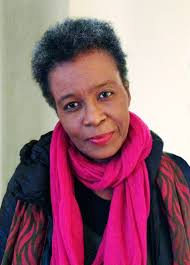
Claudia Rankine, author of Citizen: An American Lyric
Citizen: An American Lyric has a perfect excuse for not making the list: it was composed after the list was. Nonetheless, since it’s publication only three years ago, I believe it’s one of the books everyone needs to read before they die.
Citizen is a collage—a hodgepodge of pictures, personal accounts, and nonfiction written like poetry. It’s also a wide variety of perspectives on racism in modern America. Mostly what you’ll find is Rankine’s unique take on moments of racism, where she describes the context to “you” the reader, putting you in the place of the slighted and ignored. She paints the figurative portraits of the man no one will sit next to, the woman listening to complaints about affirmative action as if she’s to blame, and the child ignored and knocked over by a white man.
Reading Citizen is an experience—or, rather, it portrays the experience no one wants to have: the racism she and others have personally felt in a way that’s painfully relatable. She writes of the anger black men and women are stereotyped for, and of the collective sigh built up from all of the moments when racism stung her. More than anything, Rankine proves how different the black experience is from the white in America, with privilege clearly bending toward the white.

Still of Serena Williams at the 2011 U.S. Open in a match she famously lost. Rankine uses part II of Citizen to tell Williams’ story.
No one passage carries more weight than another, but particular attention should be given to the passage on Serena Williams, widely considered the best female tennis player of all time. Rankine delves into Williams’ history with the game of tennis, and the racism in Williams’ most famous matches—how the umpire, intentionally or unintentionally, used Williams’ skin color and stereotyped anger to penalize her in matches she was clearly winning. But whether Williams was winning or losing, her blackness is used against her, and there is no resolution to the racism she faces; the story ends with a white athlete mocking her looks and behavior, and it’s as if that’s the resolution the audience needed . . . the stereotyped image of the best tennis player of all time, minus her black skin.
The word “citizen” appears once in the entire book, toward the end—almost carrying the weight of the entire anthology of racism before it. It seems that, for black Americans, citizenship means moving on from racism . . . letting your feelings go, however attached you are to them (even if they are all you are), and ignoring the racism against you with as much force as white people are ignoring you. That’s how poisoned by racism citizenship has become—as poisoned as America itself. That hasn’t changed since the publication of Citizen—in fact, I would argue that American citizenship has continued to deteriorate from racism in spite of Rankine’s powerful work. Perhaps if more people read it, more people would see what African Americans are seeing.
It’s not easy to read—not only because it speaks to some difficult truths, but also because Rankine’s ambiguous stream-of-consciousness poetry leaves a lot to interpretation—but Citizen is important now. It portrays the difficult truths of now. Rankine’s voice is one we need to hear so that we can change what the world looks like when we step out the door. She doesn’t make it easy because she doesn’t provide political answers to a political question—she only portrays the problem of racism, which she has no solution for. She provides the empathy needed to see injustice, not the tools to fight it, and it’s not fair of us to ask her for both. After all, we’re all citizens, too.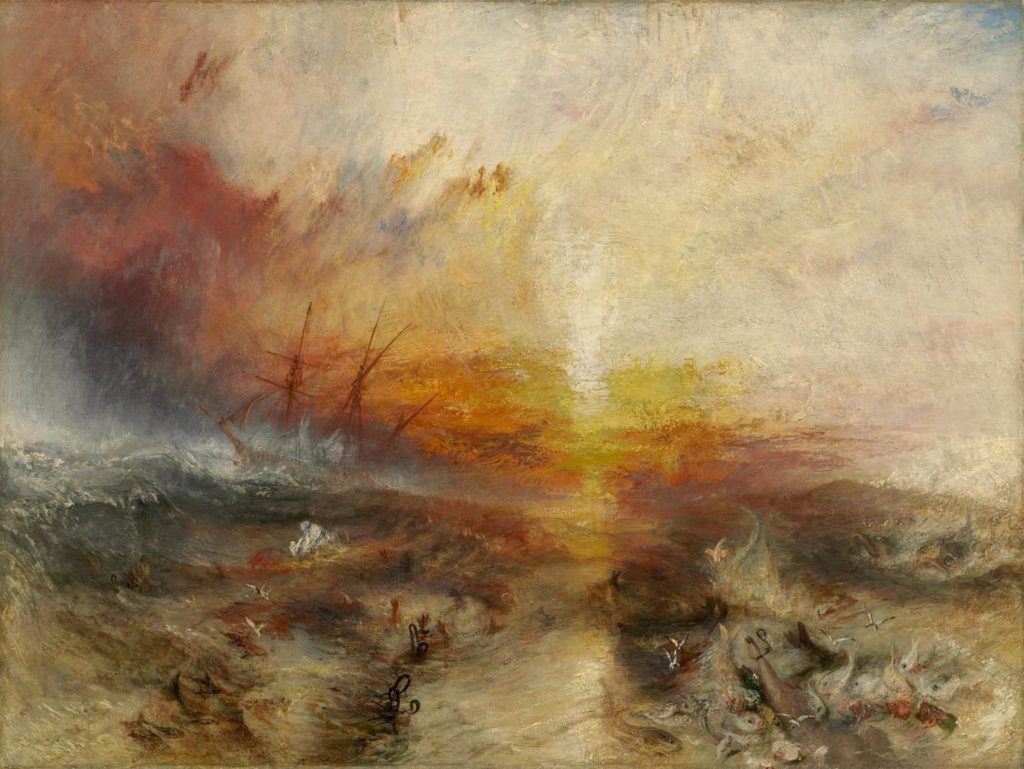
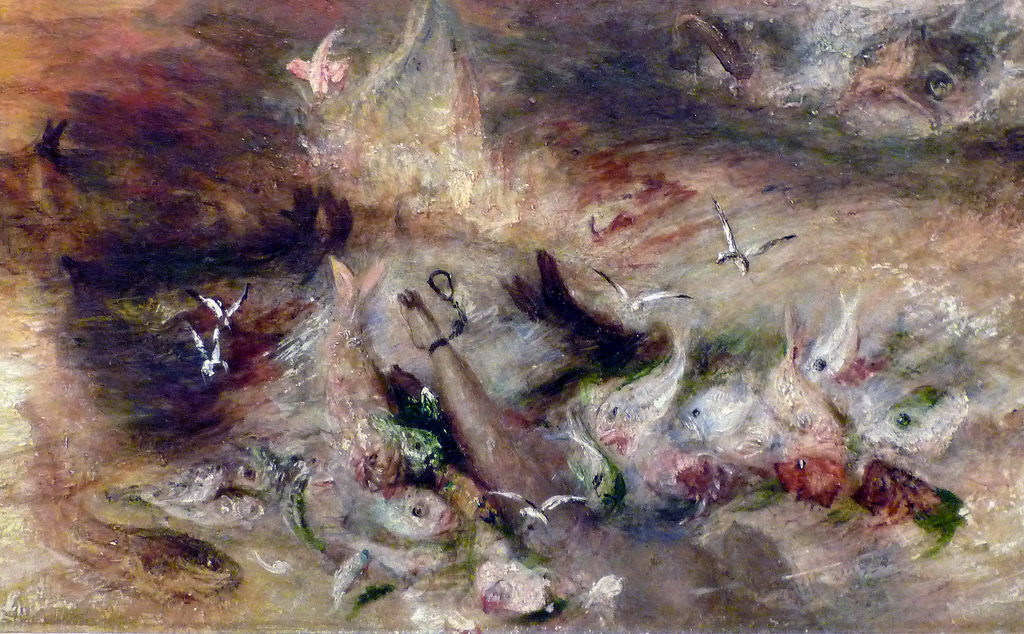
Above: The Slave Ship by Joseph Mallord William Turner. Below: A detail of a slave’s leg from The Slave Ship. Both images appear at the end of Citizen.
A few additional thoughts: In the realm of solving the problem of racism in America, I have no answers. I know brute force doesn’t work, and I know leaving everyone to their own devices doesn’t help much. My best guess is that education and love are the solution—both of which probably only work with the kind of empathy Rankine puts on her readers in Citizen.
Acknowledge your privilege, that’s another big step. Look in the mirror and see what society values—even if it’s a value from bad intentions—and use it to make the world better (not just for you). For starters, the fact that you can read this means you have enough privilege to go around. Reading Citizen is a good place to go next, in my opinion.
Prof. Jeffrey
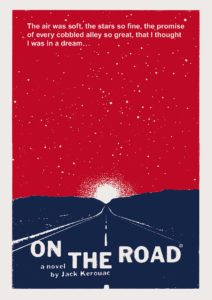 Welcome back, class.
Welcome back, class.
Jack Kerouac’s On the Road fits nicely between two other novels I’ve read for this blog: The Grapes of Wrath and The Catcher in the Rye. Kerouac’s novel has the same nonconformist, rebellious attitude as The Catcher in the Rye (with a little less teen angst), but Catcher is all in the narrator’s head. Though just like The Grapes of Wrath, On the Road has the sense of a sweeping American portrait. For its 1950s setting, it describes the entire country poetically and perceptively, which is why it makes the list.
But as good a reason as that is, I wouldn’t say On the Road was worth my time—and that’s entirely because of the story and the characters. The narrator, Sal, develops a friendship with a man named Dean Moriarty, and the story is about the many cross-country road trips they make with each other. They rarely have enough money, which never bothers them, and they find ways to enjoy the chaos of living on the open road—speeding recklessly across the landscape, sleeping around, drinking, and finding money where they can.
These two characters, with their rotating roster of friends and lovers, are always crossing the country or waiting until they can cross the country again. They can’t seem to stay in any place for long. My theory is that they are looking for happiness—something they’ve never had with the people in their lives or the jobs they’ve settled for. What they do along the way in their search doesn’t matter to them, because they aren’t happy . . . which means they can break the law, dispose of people in their lives like trash, and succumb to whatever they feel like doing at any moment.

Author Jack Kerouac
There is an appeal to their lives—they can abandon anything that ties them down, and hit the open road with more energy than anyone else. There is something impressive about their ability to relinquish everything. This is Kerouac’s connection to the Beat generation of literature—a group of artists after WWII who celebrated the beaten-down-ness and the beauty of their lives. This group found interesting ways to challenge social norms while creating new methods of art, and On the Road is one of the most powerful novels that sum up the Beat generation of artists.
But the idea of abandonment is taken too far, at least for me, by the way the characters treat others. Sal and Dean just as easily abandon the rules of kindness, and their recklessness never fails to hurt others. Their sexism and homophobia also get under my skin, even if it fits with both their lifestyle of abandonment and American society of the time. They are powerful characters, but they are incredibly unlikable.
Still, On the Road always comes back to what makes it special: a poetic voice that captures America. The road trips show off the variety of American landscapes and people—the frontier of the West, the wilderness of the East, the oppressive humidity of the behind-the-times South, the jungle of Los Angeles and the cloudy closeness of New York . . . it’s all remarkable through Sal’s eyes. I can’t to justice to Kerouac’s language, so that you’ll have to read yourself.
Up next is a novel I’ve been reading for a while, alongside the last several books I’ve posted about. I’ll probably need more than a blog post to write about James Joyce’s Ulysses, but I’ll try to keep it short! But it’s one of my favorite novels of all time, and I can hardly wait to tell you why you should read it.
Until next week,
Prof. Jeffrey
“I thought all the wilderness of America was in the West . . . No, there is a wilderness in the East; it’s the same wilderness Ben Franklin plodded in the oxcart days when he was postmaster, the same as it was when George Washington was a wild-buck Indian-fighter, when Daniel Boone told stories by Pennsylvania lamps and promised to find the Gap, when Bradford built his road and men whooped her up in log cabins.”
—from On the Road by Jack Kerouac
“This is the story of America. Everybody’s doing what they think they’re supposed to do.”
—from On the Road by Jack Kerouac
Hello again, class.
While it’s still Black History month, I want to do a little digging into one of the bright spots in literary history: the Harlem Renaissance. I am not an expert, but I know a little . . . enough to share my favorite writings from the period.
The Harlem Renaissance was an energized rebirth of African-American art and culture. After the Civil War and Reconstruction had dramatically changed (or tried to change) racial relationships in the South, there was a period called the Great Migration—a majority of the black population in America moved North. Within the walls of segregation, black Americans from all over the country began to culturally clash and grow with each other, churning out art, music, and literature.
From about 1917-1936, America’s black population caused a cultural explosion. The renaissance was the wildfire caused by the spark of the Civil War, as well as the prologue to the Civil Rights Movement and race relations in America throughout the 20th Century. And the literature—of which I’ve read a small percentage—is incredible.
I’ve made a list of my favorites (not the best, not the most important . . . just my favorites).
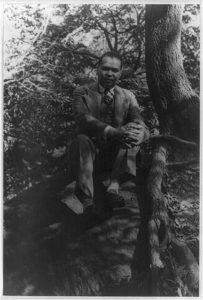
Poet Countee Cullen
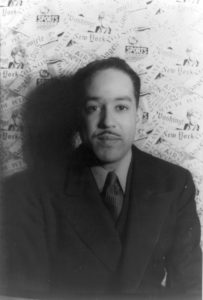
Author Langston Hughes
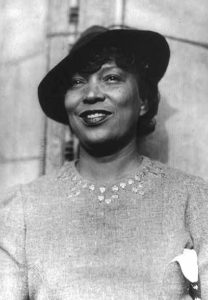
Author Zora Neale Hurston
For my sources, I used The Norton Anthology of American Literature (ed. Reidhead), The Portable Harlem Renaissance Reader (ed. Lewis), and a copy of Hurston’s Their Eyes Were Watching God.
Let me know if there’s something else I should include . . . I’m always looking for recommendations!
Until next time,
Prof. Jeffrey
Welcome back, class.
I’ve reached maximum blog power here—Graham Greene’s The Quiet American is one of the handful of books on the 50-books list that I had not only never read, but had never heard of before. This is literature obscure enough to have never even appeared before a blogger professor like myself, with all of my years of expertise.
Greene’s protagonist, Thomas Fowler, is a British reporter stationed in Vietnam who swears not to get involved in the conflict; he’s only there to report. His friend, the “quiet American” Alden Pyle, has been murdered, and Fowler begins flashing back through their friendship. Their first meeting, their awkward love triangle with a woman named Phuong, their ideological differences . . . all popping up like a panorama of Pyle’s life against the backdrop of the Vietnam conflict.
I wouldn’t say I enjoyed it. It was too political, too subtextual, too circuitous. Happens to the best of us—I appreciated all the novel did, but simply didn’t like reading it. I’ll still dole out one heck of a lecture.
I think the primary reason it made the list is also the most infamous reason—Greene’s 1950s novel predicted the outcome of American influence in Vietnam in the 60s and 70s. This is clearest in Greene’s portrayal of Alden Pyle: Pyle is young, morally motivated, and so inspired to help that he can’t see who he hurts (ladies and gentlemen, a summary of American politics). The novel heavily criticizes American intrusion in world affairs, however good the intentions may seem.
In fact, each of Greene’s main characters represent their countries. Fowler’s refusal to “take sides,” and his failure to do so, is a representation of British transition away from colonialism. Phuong’s representation of her country is laced with racism, as a silent and objectified victim; but her name, which means phoenix, implies an inner quality of resurrection against others imposing their will, much like Vietnam itself throughout the conflict.
The political predictions are not magic—they are a reaction to the World Wars. Fowler and Pyle’s father are called “isolationists,” referring to the United States’ hesitance to enter into any world conflicts. But after America’s efforts heavily influenced world events in the country’s favor, that belief began to die out. Intrusion into countries like Vietnam were ideological wars (which is why Fowler is disgusted with “mental concepts”). Greene was playing out what would keep happening if America made decisions on behalf of the rest of the world . . . and he was very right.
Politics, however, are not the way to my heart. My love is reserved for character arcs and themes.
We spend the entire story inside Fowler’s head. We get his long-standing death wish, his inability to believe in God (or anything that isn’t physical fact), his wayward morals on sex and marriage, and his confusing relationships with Pyle and Phuong. Only a few things tip off his bias, but the major one is his racism—every time he refers to the Vietnamese with the word “they,” superiority fills the air. His subtle comparison between Phuong and Pyle’s dog says more than enough.
But there is something to be said about Fowler’s bottled-up racism—he rarely, if ever, acts on it—in contrast with Pyle’s active infringement on Phuong’s life and the lives of the Vietnamese people. It’s disguised as kindness, but Pyle does more harm than good. Fowler, who holds back the harm he can cause, can’t stand Pyle’s destructiveness. Pyle’s death is caused by his own tendency for chaos and Fowler breaking his rule by taking a side.
That’s the real character arc, and the real reason to read the story: Fowler’s attempts, and his failure, to stay disengaged. He doesn’t like causing pain, and maybe by staying out of all conflicts no pain will be caused. But Pyle is the perfect catalyst for getting Fowler involved, precisely because of how much pain Pyle causes. Fowler makes a devastating choice, leading to Pyle’s death, and Fowler falls back into the story he’s worked so hard not to be a part of.
Like I said, I didn’t like reading it. But I can appreciate it. Now that, students—sincerely and unironically—is the KEY to passing English. Write that down in your notes.
Next up, I’m reading Jane Austen’s Pride and Prejudice. I’m a tad excited; this is one of those books that I wouldn’t ever read for fun, but I know I’ll enjoy it. It comes highly recommended by very cool people.
Until then,
Prof. Jeffrey
“I remembered how Pyle, sitting on the floor, waiting for the Viets, had said, ‘She seems fresh, like a flower,’ and I had flippantly replied, ‘Poor flower.’ She would never see New England now or learn the secrets of Canasta. Perhaps she would never know security; what right had I to value her less than the dead bodies in the square? Suffering is not increased by numbers; one body can contain all the suffering the world can feel. I had judged like a journalist, in terms of quantity, and I had betrayed my own principles; I had become as engagé as Pyle, and it seemed to me that no decision would ever be simple again.”
—from The Quiet American by Graham Greene
© 2025 50 Books to Read Before You Die
Theme by Anders Noren — Up ↑
Recent Comments